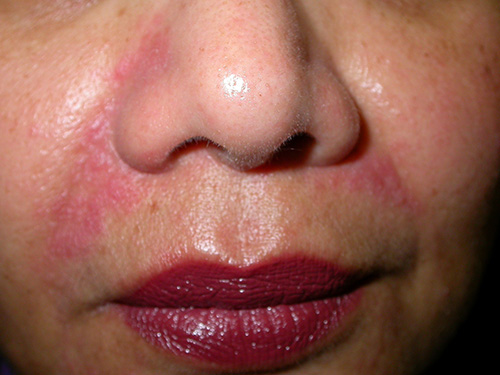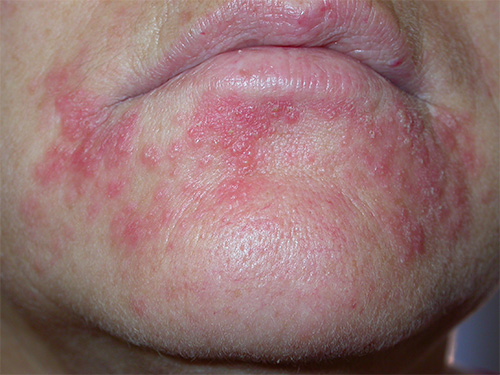Periorificial dermatitis
Periorificial dermatitis mainly occurs in females aged 20 to 50 years. It can also occur in children and adolescents of any age. It is usually papular, but may be pustular. Periorificial dermatitis can occur around the mouth and nose (perioral dermatitis), eyes (periocular or periorbital dermatitis), and occasionally elsewhere on the body (eg genitals). The chin, paranasal area and lower eyelids are most commonly affected. It may be restricted to one side of the face. Unlike atopic dermatitis, perioral dermatitis usually leaves a clear rim around the lips. See Periorificial dermatitis for photos of periorificial dermatitis.


Periorificial dermatitis is often caused by topical corticosteroids. Topical corticosteroids of any potency can cause periorificial dermatitis, even after months or years of use without adverse effect. Pimecrolimus has been reported to cause periorificial dermatitisLübbe, 2003, but the risk may be lower than with topical corticosteroids. Occlusion by cosmetics and creams can also cause periorificial dermatitis. Sometimes periorificial dermatitis is idiopathic.
If treatment is needed, treat as for rosacea. Patients with periorificial dermatitis usually have coexisting rosacea or have a history of rosacea.
